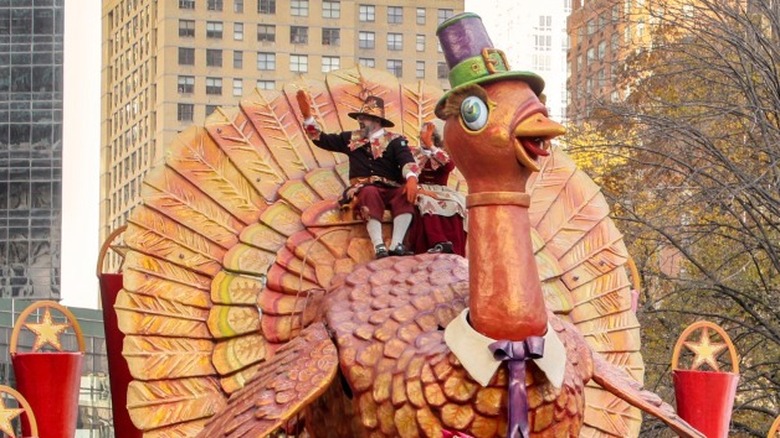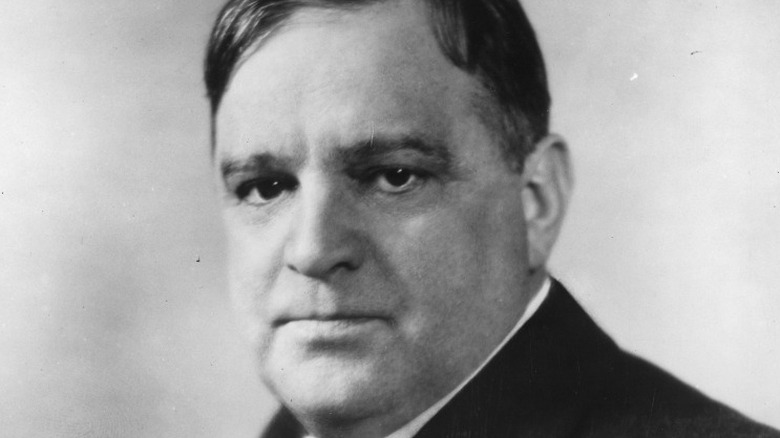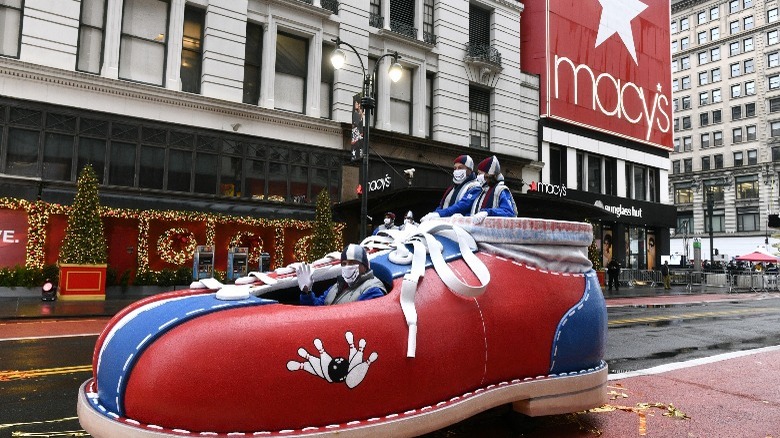The Only Times The Macy's Thanksgiving Day Parade Was Canceled
The total shutdown of events during the COVID-19 pandemic might have felt familiar to those who lived through World War II. During the war, major sporting events were canceled, including the Olympics, Wimbledon, and the Indianapolis 500 (via Deseret News). Holidays also ramped down, per the National World War II Museum. New Orleans went without Mardi Gras. New York City said goodbye to its favorite Christmas lead-up, the Macy's Thanksgiving Day Parade.
According to USA Today, the parade was only 17 years old by the time the U.S. entered the war. However, Macy's president Jack I. Straus said he found it difficult to cancel the parade in 1942 because the event was already so popular. Nonetheless, he felt it would be "a heedless waste" of rubber, gasoline, and manpower when those things were needed elsewhere (via The New York Times).
The parade had already evolved during its short existence: Although it occurred on Thanksgiving Day, it was originally called a Christmas parade in 1924, and only store employees walked in it. It included floats with the same nursery rhyme characters being displayed at the store that holiday season, and it was meant to encourage people to do their Christmas shopping at Macy's (via USA Today).
Macy's balloon donation
After the 1942 parade was canceled, Macy's donated seven parade balloons to be converted into rubber for the government's use in the war effort. A 60-foot dragon balloon was reinflated for a "farewell" ceremony held on the steps of New York City Hall. Straus presented the balloon to Mayor Fiorello La Guardia (pictured), who then stabbed the balloon with a dagger, symbolically "defeating" it. City councilmen watched and teased the mayor from second-floor windows, while a bystander told him, "Watch out for blood" (via The New York Times).
The other donated balloons were Superman, Santa Claus, a football, an elephant, a clown, and a fish. Together they produced 650 pounds of rubber, which was a valuable commodity needed for the war effort (via The New York Times). Fox Weather explains that natural rubber imports from Southeast Asia were blocked at the time, so the balloons' rubber was crucial for the U.S. military. The helium that filled the balloons was also needed elsewhere: to fill military blimps for war use. The New York Times noted that although Straus was sorry to cancel the parade, he pointed out that "Many graver sacrifices are being made by every one of us today."
The parade's comeback
The parade was canceled for three subsequent years during the war: 1942, 1943, and 1944. Rick Pomer, the Creative Director for Macy's Parade Studio, told Fox Weather these were the only years the parade has ever been canceled. As USA Today noted, the parade was even held at the height of the pandemic in 2020 (above) — just with no spectators present.
On November 14, 1945, The New York Times eagerly reported on the parade's big comeback. The 1945 parade, they said, symbolized "thanks for the bountifulness of nature and triumph in war." To display patriotic pride, the parade's first float that year included the flags of all 48 states (at the time), topped with the American flag. The Times heavily touted the genie balloons that would be featured in that year's parade, along with five balloons of other figures like a teddy bear, all made of synthetic rubber. Two years later, in 1947, the parade began to be televised, starting another tradition that endures to this day (via USA Today).


